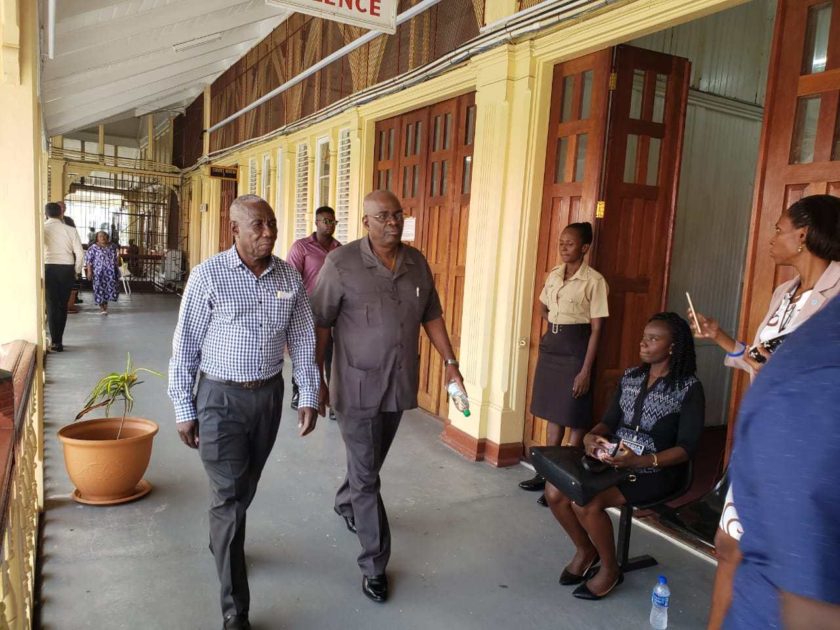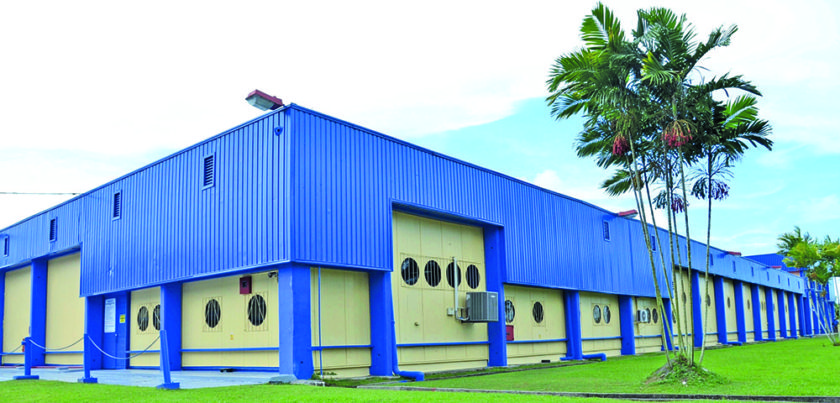
…after Venezuelan navy interruption
United States (US) oil giant ExxonMobil has refocused its efforts ever since Venezuela’s navy “intercepted” a ship exploring for oil on behalf of the company and said it plans to stick with those plans until the issues are resolved by the countries involved.
Speaking at the sidelines of an oil and gas forum on Wednesday hosted by American Chambers of Commerce (AmCham), Upstream Geoscience Manager of Esso Exploration Guyana Limited, a subsidiary of ExxonMobil, Dough McGhee said that it is a Government problem right now and they are hoping that it will be resolved.
“We just refocused our efforts down in the southeast. There is a lot of data we are still acquiring down there, so we continue to explore in the Stabroek block,” he explained.
Venezuela’s navy stopped two exploration vessels that the company had hired late last year. The navy halted seismic data collection.
Government said Venezuelans tried to land a helicopter on the deck of the Ramform Tethys, a seismic ship hired by ExxonMobil that had a total of 70 crew members on board and the captain.
It said the ship was intercepted in the Exclusive Economic Zone and continental shelf of Guyana at approximately 140 kilometres from the nearest point to the middle line with Venezuela.
Following that incident, ExxonMobil had moved to redirect its efforts in other parts of the Stabroek Block in which they are licenced to conduct exploration.
Guyana had called on Venezuela to withdraw its decree against Guyana’s rights to explore its territory; a call that is also fully supported by the Opposition.
Government had urged the Spanish-speaking country to cease these types of military actions and join Guyana in submitting its territorial case to the International Court of Justice (ICJ).
EPA permit
Meanwhile, when asked to comment on a possible timeline for the company’s permit from the Environmental Protection Agency (EPA), McGhee said he is hopeful that they will get it soon.
He said, “We are hoping to get that soon. We have provided them with a lot of information. We have a good dialogue going on with them right now…we would like to see it in the first quarter”.
Earlier this month, ExxonMobil announced positive results from the Tilapia-1 and Haimara-1 wells offshore Guyana, bringing the total number of discoveries on the Stabroek Block to 12.
The previous 10 discoveries on the Stabroek Block established the potential for at least five floating production, storage and offloading (FPSO) vessels producing more than 750,000 barrels of oil per day by 2025.
The Liza Phase 1 development is progressing on schedule and is expected to begin producing up to 120,000 barrels of oil per day in early 2020, utilising the Liza Destiny FPSO.
Liza Phase 2, which will use a second FPSO designed to produce up to 220,000 barrels of oil per day, is expected to start up by mid-2022. A third development, Payara, is expected to start up as early as 2023.
When US oil giant ExxonMobil announced the first of multiple oil finds in local waters in 2015, Venezuela renewed its claim to two-thirds of Guyana’s territory.
Venezuela has been against oil exploration in Guyana’s Stabroek Block, where multiple oil deposits were found by ExxonMobil, and has since renewed claims to the Essequibo region.
On January 30, 2018, Secretary General of the United Nations, Antonio Guterres concluded the Good Offices Process – which the parties had engaged in for almost 30 years, but did not achieve a resolution to the controversy – and chose the ICJ as the next means of settlement, for which Guyana had long been advocating.
Guyana has moved to the ICJ and is now awaiting the matter to take its rightful course.



